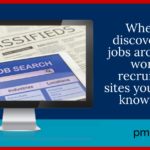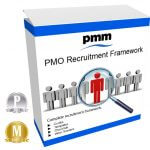In the last post I provided an overview of the end to end recruitment process for project team members, “Overview of project team recruitment management“. This post is going to focus on the 4 steps involved in the preparation phase of the process:
- Demand
- Job Specifications
- Engage HR
- Approval to Recruit
As with most things in life, it is the preparation that makes the difference. As Abraham Lincoln said “Give me 6 hours to chop down a tree and I will spend the first 4 sharpening the axe“.
Demand
Before you can start any of the other steps, you must work out what resources you need. This is obvious otherwise how will you know what job specification to prepare, what to enter into the approval process, etc.
How you establish the demand will depend on where you are in the project lifecycle.
For example, if you are at the very start, you will probably not have had chance to develop business case or initial plans. In order to do so, you will need resources. This is where you will have to use some expert judgement to determine how many resources you need to start the work. Maybe it is a project manager and a business analyst.
If the project is more established and you have developed a business case and initial plan, then you can use the data within both to determine the resources you may need. For example, if you have 4 streams, you may choose to add 4 additional business analysts, 1 for each stream.
When you are capturing the demand, you need to consider and capture some key data points:
Resource type – project manager, business analyst, developer, tester, PMO, etc
Skill set – business / technical, subject domain, programming language, etc
Duration – period when resource type will be required i.e. Jan – Jun 2018
Location – need to know what resources are needed where
It is a good idea to capture this information into an Excel (spreadsheet) template, plotting the resource type requirement by month. This will then provide you with a month on month demand view.
You can find out more on establishing a process in the post “Guide to manual project resource management process“.
Job Specifications
Now you have the demand, you can start to prepare the job specifications (job specs) for each role you need to fill.
Before you start preparing your own specs, it is worth checking what format you need to use as most organisations typically have defined standards. A real smart tip to save time is to ask other project teams who have already recruited resources if they have example job spects for the role types you need i.e project manager. This will mean you then only need to customize the sections.
The job spec should contain:
- Role title – Project Manager XYZ Project
- Position / Level – Director, VP, etc (need to know seniority of role)
- Location – London, New York, etc
- Company Overview – gives an understanding of the organisation
- Division / Team Overview – gives understanding to the area within the organisation
- Role Overview – a description of the role being filled
- Responsibilities – what is expected of the role holder
- Skills / Requirements – used to detail the specific minimum requirements for applicants. For example may specify project manager must be PMP qualified.
It is possible to split the skills / requirements between required and desirable.
Remember, the more accurate the job spec, the more chance you will have of securing good candidates. Many people rush this step as they want to get the role live in the market place. However, a poorly written, generic job spec will result in a larger number of candidates, many who may not be suitable.
Another often overlooked part of the job spec is that it is your initial sales pitch to candidates. It is important to write it in a way that makes the role attractive to the best candidates.
Engage HR
This step should actually be started as soon as you know you will need to recruit resources. It is important to make HR / Recruitment aware that you will need to recruit. They will then be able to offer advice and assistance of the steps you need to take, processes you need to follow.
I have found having a good dialogue with HR helps the process. They can advise on steps to follow, provide templates, tell you who needs to approve what, what suppliers / agencies are on the Preferred Supplier List (PSL),etc.
If you build a really good relationship with HR and demonstrate that you try to do “the right thing” and not circumvent the system, there is an increased chance that they will be more willing to start the engagement / briefing of external recruitment agencies even before the role is fully authorised. This has the benefit that the agencies can start building lists of potential candidates ahead of the role being formally released to market. This should mean that there is a reduced time between releasing the role and receiving good CV’s.
Approval to Recruit
Controlling headcount and costs is very important to an organisation. Therefore, most organisations have defined processes for the approval of new positions. This will typically involve a number of sign-off’s by senior management.
This process can take a long time. So it is important to start the process as soon as possible as without approval you will not be able to hire. Again HR should be able to provide advice.
Steps to take:
- Identify approval process
- Gain access to system (if required)
- Enter position details
- Review and submit for approval
- Monitor approval process
- Chase up if there are delays
Obviously the above is generic. However, it covers the key principles. It is in your interest to ensure that you get a fully approved position as quickly as possible so that you can recruit.
A smart tip is to brief the people who need to approve before submitting the request. This will enable them to ask questions / challenge and should mean that when they see the request, it is a quick approval.
Summary
Recruitment is a process and needs certain steps to be followed. The above provides a guide to the 4 steps you should take as part of the preparation phase. The next post will cover the remaining steps in the recruitment process.






